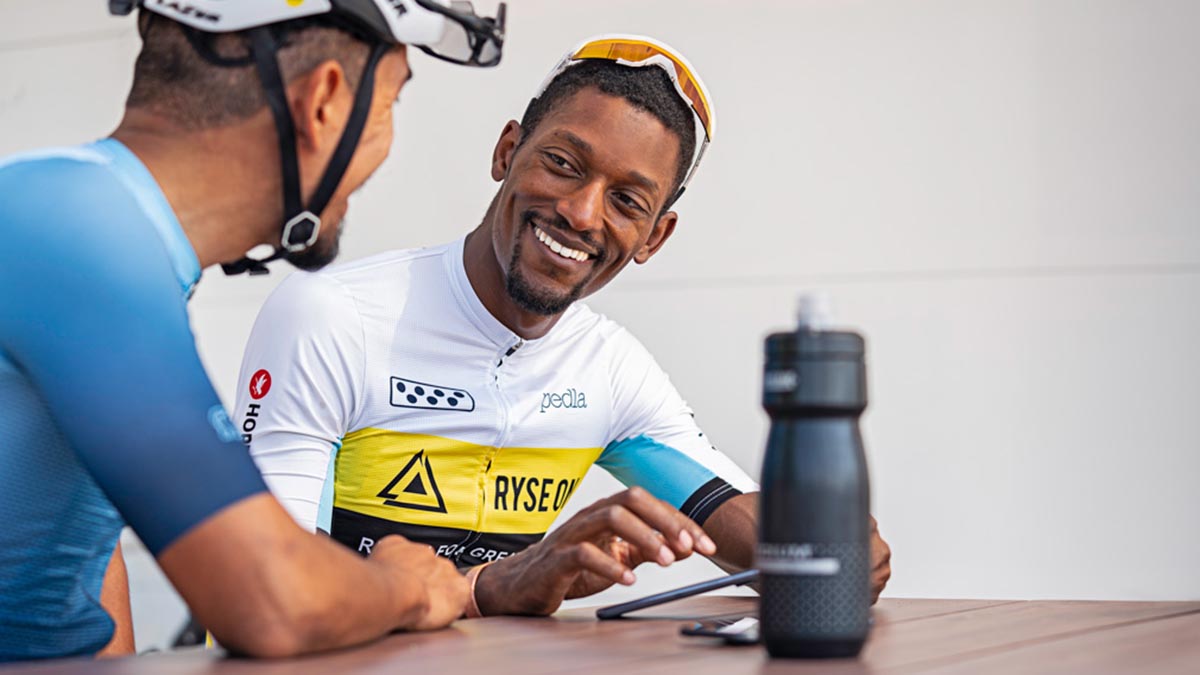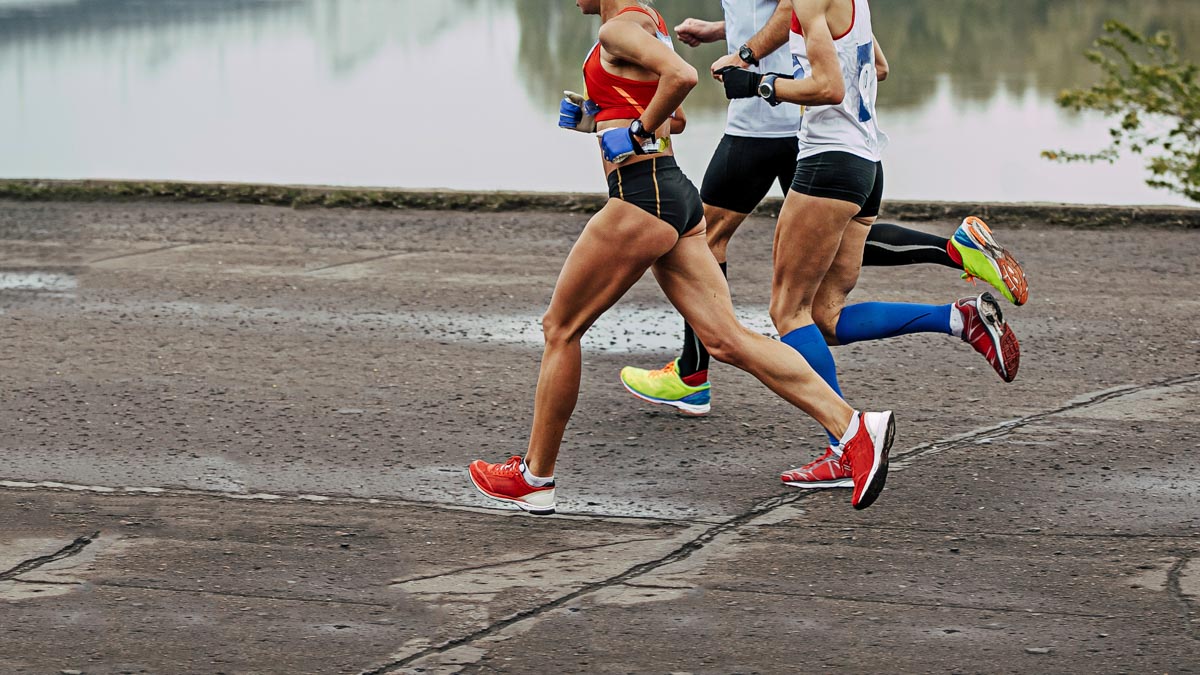Iron deficiency and iron deficiency anemia are hot topics in many endurance athlete’s circles. Iron, specifically low levels of it, is often linked to feelings of exhaustion and poor recovery.
Iron is a critical nutritional component for all individuals, but is particularly important for athletes due to the important role it plays in oxygen transportation to working muscles.
Let’s take a closer look at what Iron deficiency and anemia are and how endurance athletes can take charge of their iron consumption to ensure healthy levels during training.
What are Iron and Anemia?
Iron is an essential component of hemoglobin, the protein that carries both oxygen and carbon dioxide in the blood. It also plays a key role in the transfer of oxygen in muscle cells. ATP, the body’s primary energy source, is also produced with the help of iron.
It’s an essential mineral, as our bodies don’t produce it naturally, so we have to get it from diet or supplementation to ensure we meet our nutritional needs. It’s clear to see how critical iron is for the endurance athlete, but what does it mean to have an iron deficiency?
Iron deficiency is the world’s most common nutritional disorder in both athletes and non-athletes. Anemia is very simply a lack of iron in the blood. Furthermore, it means that hemoglobin levels are low.
Because hemoglobin carries oxygen in the blood, it only makes sense that this can be bad for athletes looking to use increased levels of oxygen during training.
Ferritin is another key player in iron deficiency. Ferritin is a transport protein that binds to iron and releases it in the body when it is needed. It keeps iron from traveling in the body as a free radical. Make note of ferritin, as it is a key player in understanding both anemia and iron deficiency.
Iron Deficiency in Endurance Athletes
The first thing that’s important to understand is that an athlete can be iron deficient and not have anemia. Anemia often gets tossed around loosely, but it’s a separate and much more serious disorder than simple iron deficiency.
If one has low hemoglobin, and iron is the cause, then they have iron deficiency anemia. This disorder can result in a severe decrease in work capacity and VO2max in the case of endurance athletes.
However, if they have low ferritin, but the hemoglobin value is normal, then they’re only iron deficient. The difference is key, as anemia is more severe.
Ferritin is a key piece of the puzzle, although there are a few things to keep in mind. Ferritin levels can go up when under stress. Sickness, infection, and injury, among other things, can impact ferritin levels.
Also, there’s no “agreed” amount for what low ferritin is/should be. In general, if the test value is less than 30-35 ng/mL, then Iron deficiency treatment should be discussed, and if it’s 35-60 ng/mL, then increasing iron may be a prudent step.
Often athletes who are concerned about being iron deficient or think that increased iron levels can increase performance will jump immediately to iron supplements.
However, taking iron supplements when an athlete doesn’t need them or doesn’t understand how low they are can be detrimental to health. In extreme cases, too much iron can lead to hemochromatosis, which can be deadly.
The best and safest way to keep an eye on iron levels is to get a blood test. The test should check both hemoglobin and ferritin levels to fully understand if they are suffering from iron deficiency or iron deficiency anemia.
It’s a good idea to get tested regularly, especially during increased training loads. If an athlete is suffering from decreased energy levels or poor recovery for more than seven days, it may be time to think about scheduling a blood test.
How to Avoid Anemia and Iron Deficiency
Iron should first come from a balanced diet and not supplements. There are two types of iron sources found in food. Heme and non-heme foods reference the amount of iron that the body is able to absorb from these sources.
Heme foods include meat, fish and poultry. Up to 25% of the iron found in these foods is absorbed into the body. Non-heme Iron is found in vegetables and supplements and is only absorbed at a rate of 3-15%.
If there is a focus on non-heme foods due to dietary restrictions, or this tends to be where an athlete receives the majority of their iron, they should focus on getting as much iron from those sources as possible, as well as increasing vitamin C consumption. Vitamin C helps the body to retain iron and increase absorption from non-heme sources.
Periodizing nutrition can be an important step in managing iron intake. Basically, a periodized approach to nutrition means that when the training load increases, so does the calorie and nutrient intake.
Conversely, when your training load decreases, athletes should adjust their diet accordingly. One of the things one can do immediately is curb the consumption of coffee, tea and alcohol, as these substances negatively impact iron absorption. This is especially true when training load and stress increase.
Iron deficiency and iron deficiency anemia can be serious problems for endurance athletes at all levels. The symptoms associated with both of these conditions can be ones that plague athletes for long periods of time if left unchecked.
Getting a blood test performed by a trained medical professional that checks for both hemoglobin and ferritin is the only way to know for certain if iron levels are low.
During periods of both high and moderate training, it’s important to get enough dietary iron. A focus on heme-iron foods will ensure maximum absorption, as well as non-heme foods paired with vitamin C.
Iron is a key component in everyone’s health, but it plays an even more significant role in an endurance athlete’s life and performance.
References
Rodenberg, R.E. & Gustafson, S. (2007, July). Iron as Ergogenic Aid: Ironclad Evidence? Retrieved from https://www.ncbi.nlm.nih.gov/pubmed/17618003
Al-Naseem, A., Sallam, A., Choudhury, S., & Thachil, J. (2021). Iron deficiency without anaemia: A diagnosis that matters. Retrieved from https://doi.org/10.7861/clinmed.2020-0582
McDowell, L., Kudaravalli, P., et al. (2024). Iron Overload. Retrieved from https://www.ncbi.nlm.nih.gov/books/NBK526131/








